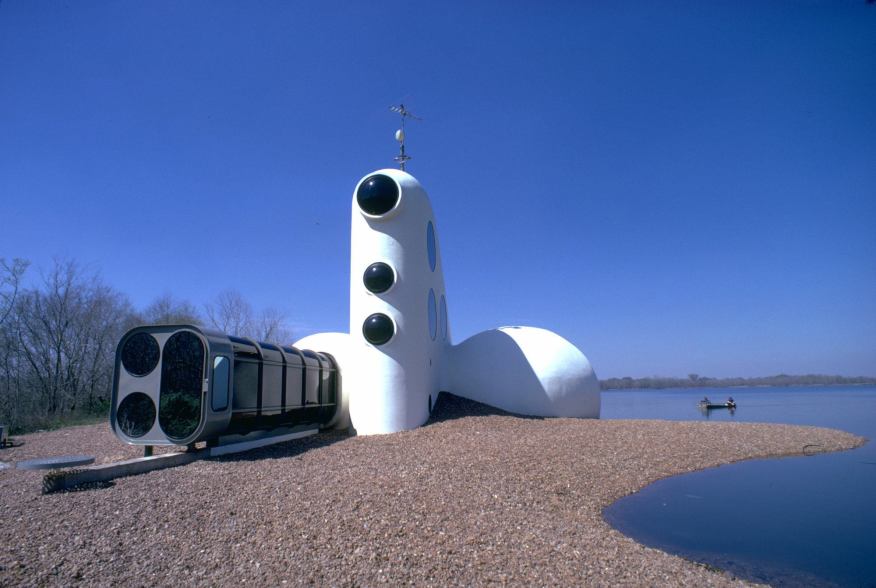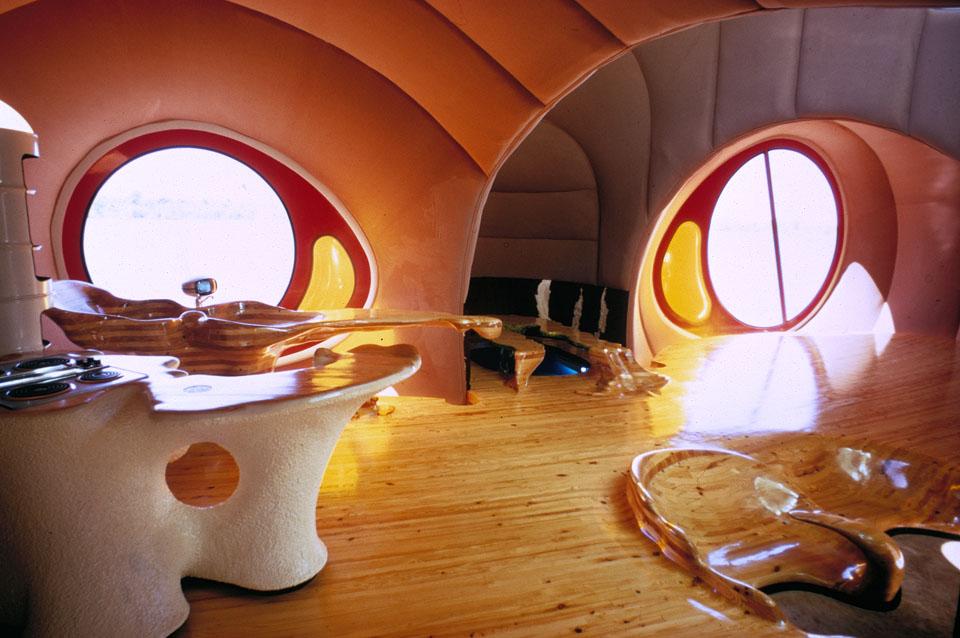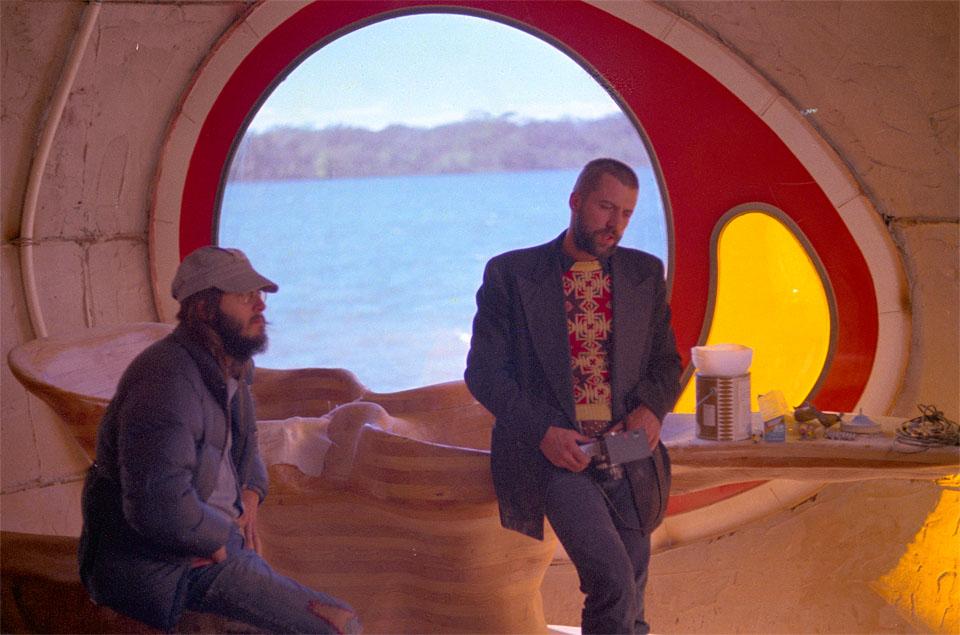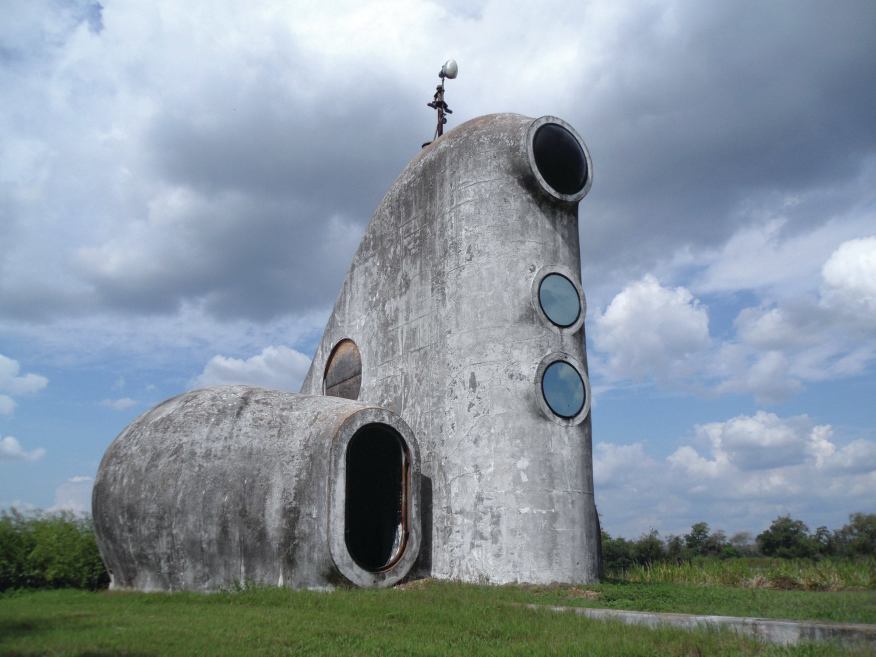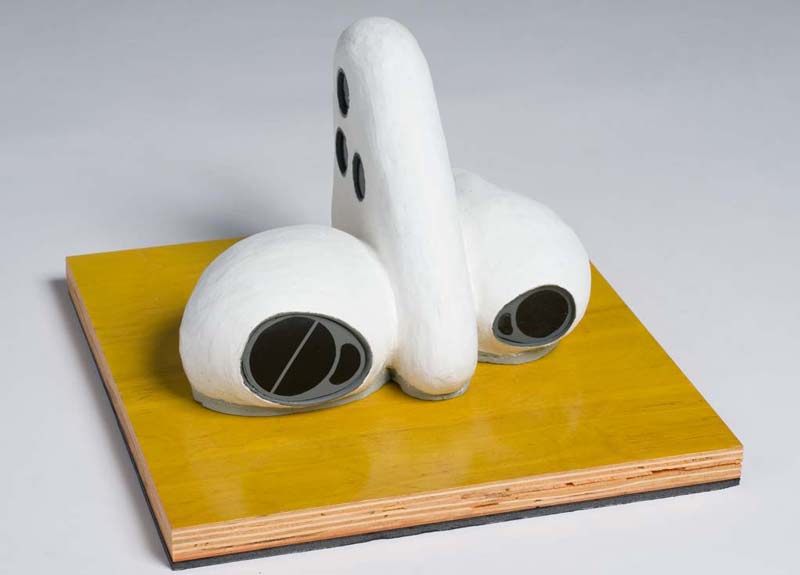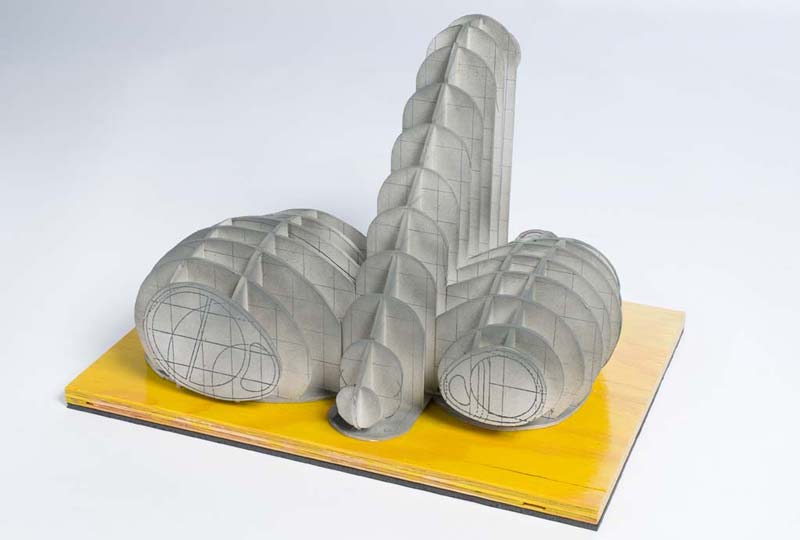The House of the Century was built in the wrong century. Designed and built by Doug Michels and Chip Lord of the avant-garde San Francisco design collective Ant Farm, with architect Richard Jost, this lakeside retreat near Houston, commissioned by an art patron, has an evocative, organic shape, with round living and kitchen spaces flanking a ladder-accessible tower that contains a bathroom and stacked bedrooms. Constructed from steel mesh and layers of chicken wire that were plastered, waterproofed, and coated with the cement, sand, and water mixture known as gunite, the structure has large porthole windows and an interior of wood floors and built-in wood counters and tables. A fireplace with an exposed flue was used to heat the house; the TV antenna atop the tower poked fun at a then-popular, Pop Art reference.
House of the Century no fue construída en el siglo adecuado. Proyectada y construida por Michels Douglas y Chip Lord del collectivo vanguardista Ant Farm en colaboración con el arquitecto Richard Jost, este refugio en un lago cercano a Houston fue encargado por un marchante de arte. La vivienda tiene una evocadora forma orgánica con una sala redonda y una cocina que flanquea una escalera que da acceso a la torre en la que se localizan el baño y los dormitorios. Fue Construida a partir de una malla de acero y varias capas de alambre que sostenían que sostenían el impermeablizante, el cemento. La estructura tiene unas grandes aperturas circulares que abren el interior al lago. Dicho interior está definido por su suelo de madera, su mobiliario empotrado construido in-situ y una chimenea que calentaba el hogar. Finalmente, se corona con una antena de TV que hacía claramente referencia al Art Pop del momento

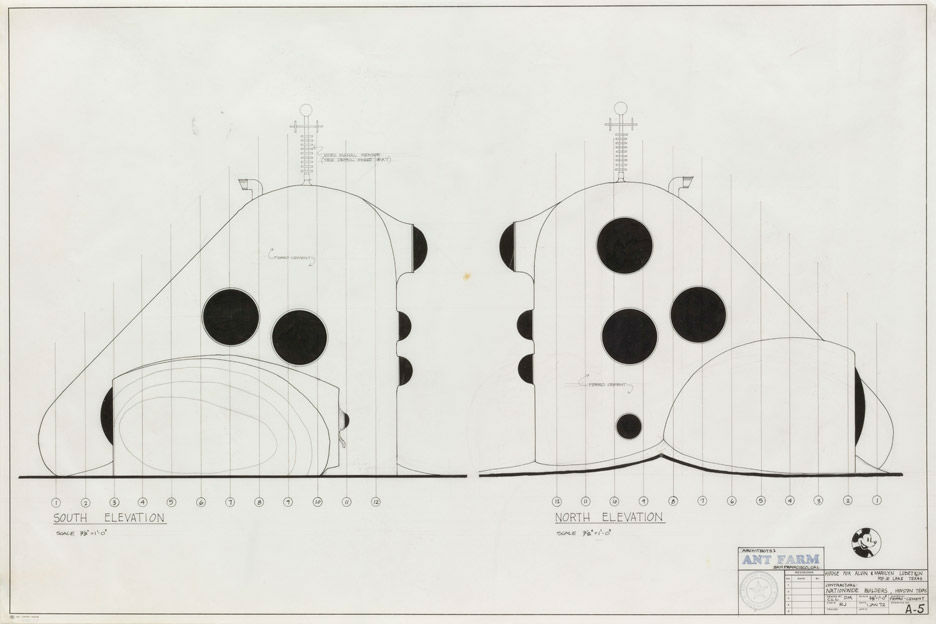
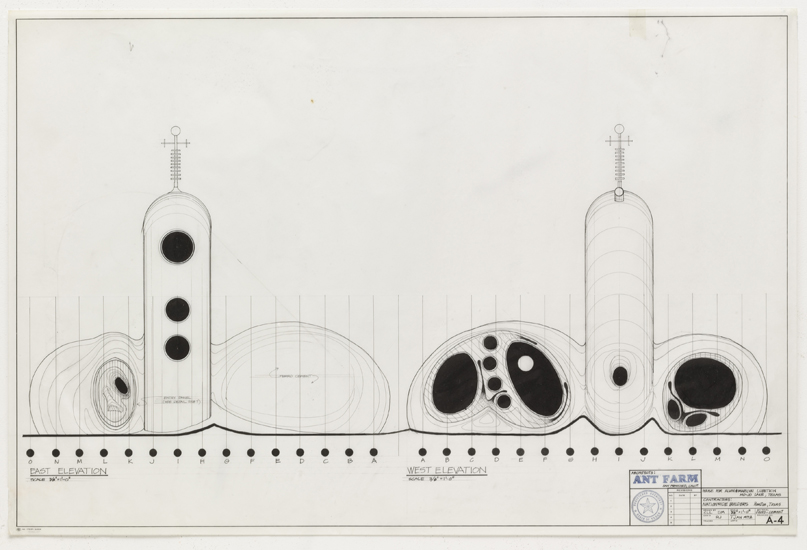


The structure lasted about a decade, when a flood in the mid-1980s largely destroyed the interior, leaving the structure in its current, semi-ruined state. Like all great architecture, this one evokes several interpretations: as an homage to Houston’s Apollo program, as the front of a 1930s Ford, and even as a phallic symbol of the 1960s sex-drugs-and-rock-and-roll era. It also foretold 21st-century interests, such as the creation of biomorphic forms now done on the computer, the construction of buildings using design/build methods, the experimentation with low-cost materials borrowed from other industries, and the reduction of a dwelling’s size for sustainability and affordability reasons. Well-documented in several YouTube videos by Richard Jost, this house is as much, if not more, of this century as the last one.
La vivienda sobrevivió alrededor de una década ya que una gran inundación provocada por el lago adyacente, destruyó su interior y la convirtió e n una ruina. Su morfología evoca varias interpretaciones que estaban asociadas con el momento en que se construyó: un homenaje al Programa Apolo de Houston, una referencia al coche Ford de 1930 e incluso un simbolismo fálico que podría representar el lema de los años 60 de Sexo, Drogas y Rock-n’roll. Pese a su corta existencia, en cierto se adelantó a algunas de las estéticas dominantes del Siglo XXI con el uso de formas biomórficas, la investigación con materias bajo coste tomados de otras industrias y la reducción de una vivenda con fines de asequibilidad y sostenibilidad. El vídeo está documentado en un documental de Richard Jost que se puede ver un Youtube.
Text by Architect Magazine
